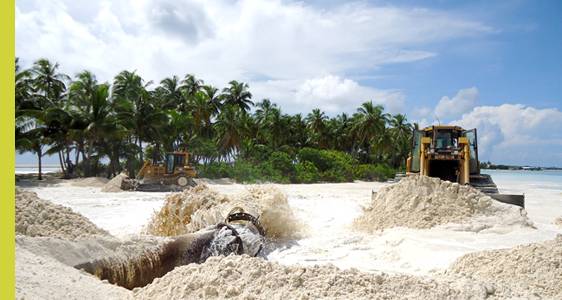
The International Association of Dredging Companies (IADC) has produced a new paper: “Sand as a resource: Best practices to conduct responsible dredging projects” was initiated and presented by its Sustainability Committee.
According to the UN Environmental Programme (UNEP), 50 billion cubic meters of sand is mined annually. Of this amount however, only a small percentage (2-4%) is dredged by dredging companies.
As a sector, the dredging industry has extensive expertise in the sustainable extraction of sand, and the goal of the paper is therefore to share its experience with a broader audience to advise other industries and stakeholders in sustainable practices.
The path towards sustainable use of sand is set out in 10 recommendations formulated by UNEP. IADC builds on this from the perspective of the dredging industry and directly refers to UNEP’S recommendation number 7: “Establish best practices and national standards, and a coherent international framework.”
The paper presents best practices for optimal use of scarce sand resources on both project and operational levels. Key takeaways are:
• Performing and adhering to an Environmental and Social Impact Assessment (ESIA) are key to finding consensus about conditions and requirements for sand extraction;
• Impact mitigation and nature-inspired design start with monitoring and understanding the physical and ecological processes involved;
• Dredging in or near sensitive sites with high natural or cultural value is only feasible with extensive monitoring, adherence to strict limits and adequate supervision;
• Beneficial use of dredged sediment from capital and maintenance dredging projects is an alternative to sand extraction;
• Stakeholder engagement addresses concerns and unlocks potentials;
• Adaptive management counters risks and uncertainties associated with dredging projects;
• Appropriate procurement processes are able to prioritise project objectives;
• Large marine infrastructure projects entail opportunities to involve the local socio-economic community;
• Incentives for investment in innovation, safety culture and impact mitigation measures encourage improved practices; and
• Transparency about activities, with publicly available monitoring data and warning triggers, helps to maintain focus on impacts and to obtain project acceptance.



